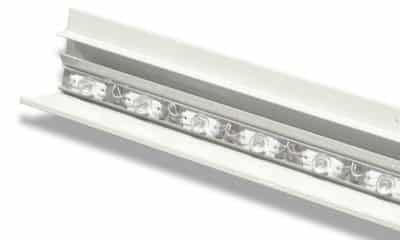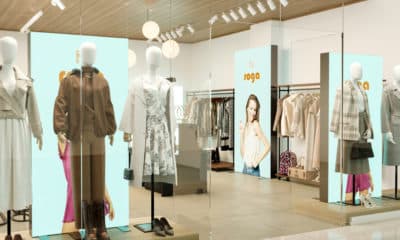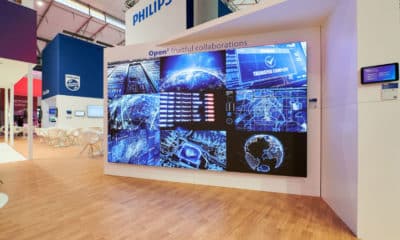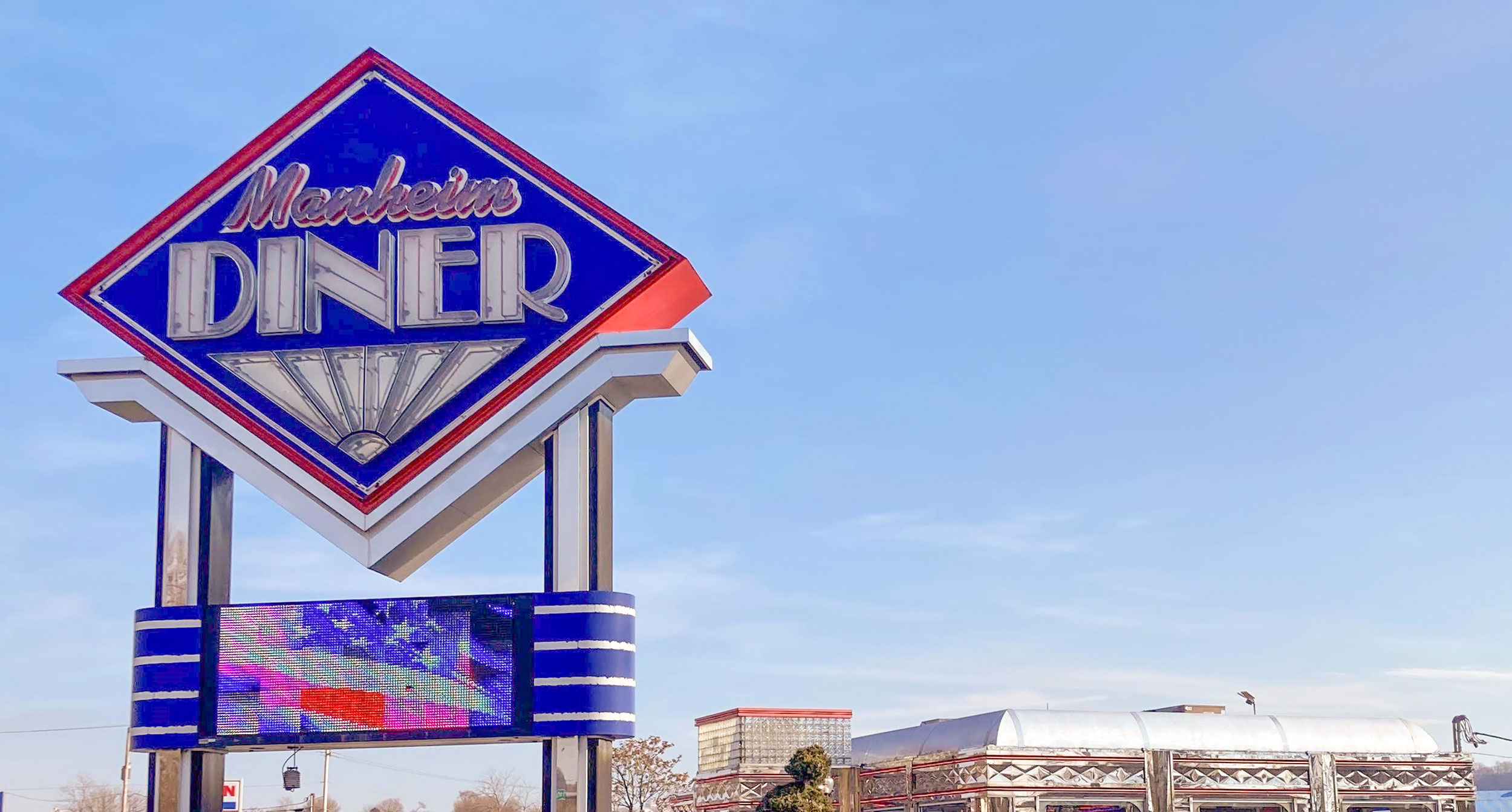
Color Me LED
LED trends include coordinating product choices with materials and effects for desired light and colors, while faux neon gains on the original.
Published
3 years agoon
COLORS AND SIGNAGE have gone together since the beginning of sign fabrication and it’s no less true with LEDs in the picture. Today’s faux neon is increasingly attractive, while red, green, blue (RGB) LEDs, which provide every color under the sun, are now easier to implement and control. Customers are looking for more customization than ever, including new materials and lighting effects to make each sign a statement. “Even though we still see a lot of standard rectangular or round cabinets, for instance, it seems like everything is trending toward architectural signage with 3D art, custom logos and materials,” said Mark Gilbert, foreman at Bartush Signs, a full-service signage firm in Orwigsburg, PA.
The interaction between lighting and alternative materials such as acrylic, faux stone and various powder-coated finishes also provides opportunities for a particular look and finish. Michael McKeag, president and CEO of ASI Signage Innovations (Grinnell, IA), said, “In the design process, customers get excited about changing lighting, whether it’s to match their brand, seasonal colors or the ability to vary whites from warm to daylight to cool white when needed.”
MATCH THAT COLOR
Nobody needs to tell a sports fan that getting a team’s colors just right is essential. In a project for the University of Iowa’s Kinnick Stadium, ASI provided indoor and outdoor signage, including an 800-sq.-ft. Tigerhawk logo (aka the Hawkeye) that faces the football stadium’s outer wall, as well as a triangular interior sign that used thin acrylic pipes (fiber wire) and RGB modules to precisely match the gold against a solid black background. Prototyping revealed that a continuous piece of acrylic would kink and not provide the desired lateral effect, so ASI’s fabrication team laser-etched the acrylic. The massive outside logo was finished with Principal LED’s Qwik Mod 3 and Streetfighter 7100K LED lighting and a flex face with perforated 3M vinyl material, which allowed for a lighter-weight sign and white illumination at night.
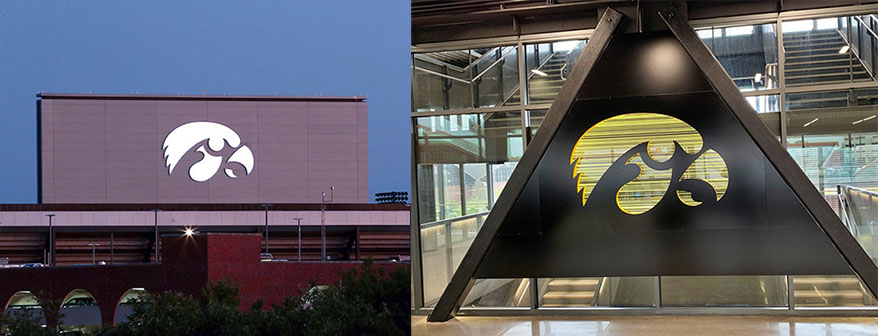
ASI Signage Innovations chose Principal LED Qwik Mod 3 and Streetfighter modules to create this white Tigerhawk logo. The 3M perforated vinyl flex face material enables a lighter-weight sign (36 x 22 ft.).
Color illumination is getting a little simpler with remote control via handheld devices. “The desire for RGB color applications is definitely trending upward and you no longer must have a separate DMX controller to fluctuate all LED illumination systems,” McKeag said. However, he noted that DMX controllers are still required when a sequential, auto-programmed RGB solution that runs itself is desired. He added that ASI is seeing more RGB use in accent or edge lighting for indoor and outdoor applications.
NEON OR FAUX NEON?
Just as television never fully replaced radio, some believe neon signs will never be completely replaced by faux neon constructed of LEDs. Neon is among the most beloved forms of colored signage – combining hand-bent glass filled with neon, argon or other gases in sealed tubes and then lit with high-voltage electricity to create their distinctive glows. The neon look is enjoying a revival these days and is a hallmark along Route 66 and throughout certain parts of the US. “In addition to the classic and nostalgic look and feel of neon, [faux neon] lends itself better to small and tight signage,” McKeag said. “We’re also seeing increasing use of LED borders and accent lighting.” Movie theater marquees, in particular, are amenable to authentic neon, especially those in historic districts. Today’s designs often combine LED and neon to capture the best of both worlds, as was the case with Detroit’s Majestic Theatre and Portland’s Hollywood Theatre.
Advertisement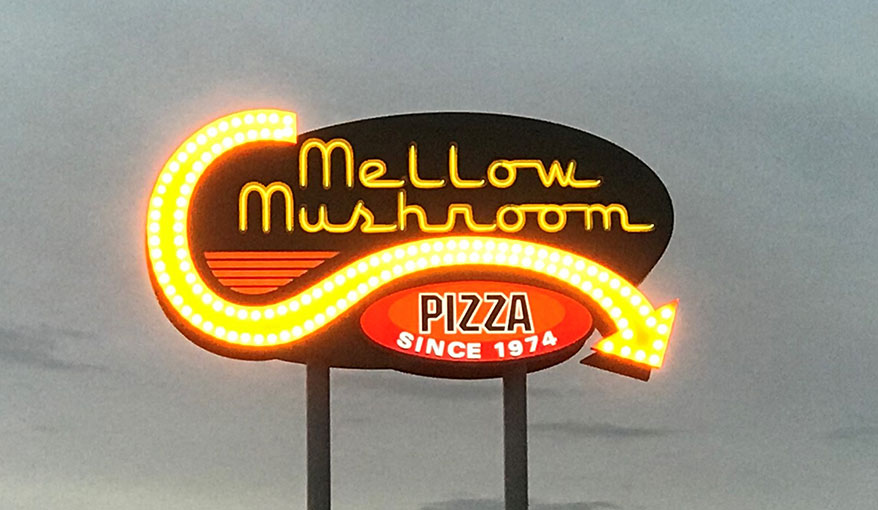
Mellow Mushroom in Florida uses LEDs to approximate neon and to stand up better to tropical storms than neon signs would.
While neon is clearly cool, it cannot compete with low-voltage LED in electrical safety, durability and low-energy usage. “Neon is still popular, [and] there might come a time when neon is eliminated completely, but probably not in my lifetime,” said Gilbert, who has been making signs for nearly 40 years. One factor that may contribute to neon’s demise is restrictive sign codes. “Even with UL approval, some local townships and supervisors have made the decision to not allow neon,” Gilbert said. While he admitted that this practice is rare, local regulations dictate what is and is not permitted. Faux neon’s ability to capture neon’s look without the hassle and energy cost, while creating all colors, makes it more attractive. Maintenance may be easier with LEDs as well – depending on the installation – as neon’s glass can break and gases can leak over time, leading to partial or complete sign outages.
SIGNMAKING SIMPLIFIED
In 2020, sign companies and countless other businesses had their work cut out for them just in keeping things rolling and delivering on time. The COVID-19 pandemic added the acrylic-shield business, but also led to supply-chain issues for shops expecting materials shipped internationally. While investments have been made to bring the supply chain under greater control as a result, signmakers are always looking for ways to fabricate and install signs more efficiently. “The biggest advance in recent years has been our ability to run more LED modules on fewer power supplies,” McKeag said. While some shift from 12 V to 24 V power supplies has taken place, shops are looking for additional advances in this area, as well as other improvements, that shorten install times. “We’re seeing easier wiring, and the 24 V supplies work well on an initial install, but overall service planning and preparing for unforeseen circumstances are also critical,” Gilbert said.
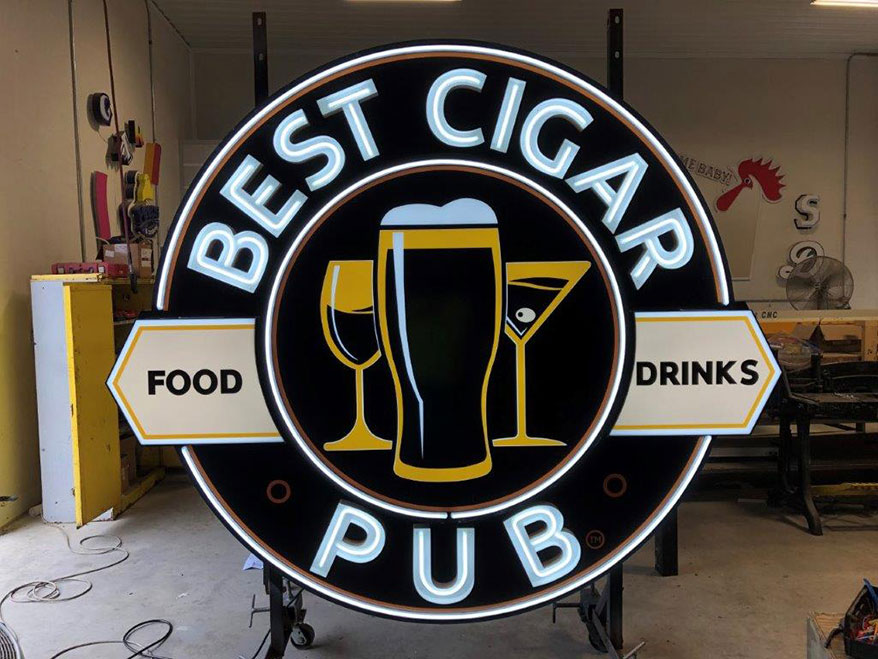
Bartush’s custom sign (6 ft. in diameter), incorporating G2G Lighting’s Anpro 180 LED modules and Aurora Mini Flex product, reflects the welcoming atmosphere of the pub.
Clearly, LEDs make the ability to create the exacting colors and illumination needed for signs a whole lot easier. Faux neon with LED competes well with neon, offering pronounced advantages in energy cost and safety issues. The clever combination of neon with faux neon still captures the romance of the illuminated glass tubes while achieving sustainability. Signmakers should stay abreast of the latest technology from LED suppliers to match the best product to the need. The signmaking industry was strained in 2020, but in some way, difficult conditions brought out the best in signshop ingenuity.
Laura Peters is a full-time freelance writer who specializes in technology topics including LEDs and their many applications. Laura was previously senior technical editor of LEDs Magazine, editor-in-chief of Semiconductor International and has over 20 years of experience working in semiconductor manufacturing. Contact Laura at lpeters40@gmail.com.

SPONSORED VIDEO
Who’s Steering Signs of the Times?
We dive into the history of the sign industry’s oldest trade journal, highlighting some interesting facts about how it all started to where it’s headed. Did you know that Signs of the Times is nearly 120 years old?
You may like
Advertisement

Canon U.S.A. to Host Webinar on AI Integration in Business

21 Highlights from the American Sign Museum Main Street Expansion

From Chips to Hip
Subscribe

Bulletins
Get the most important news and business ideas from Signs of the Times magazine's news bulletin.
Advertisement
Most Popular
-

 Tip Sheet2 weeks ago
Tip Sheet2 weeks agoSign Tips for Construction Fence Graphics and CNC Tables
-

 Real Deal2 weeks ago
Real Deal2 weeks agoA Wrap Shop Plots to Take Back a Poached Installer
-

 Paula Fargo3 days ago
Paula Fargo3 days agoSelling Your Sign Company Via the Franchising World
-

 Photo Gallery23 hours ago
Photo Gallery23 hours ago21 Highlights from the American Sign Museum Main Street Expansion
-
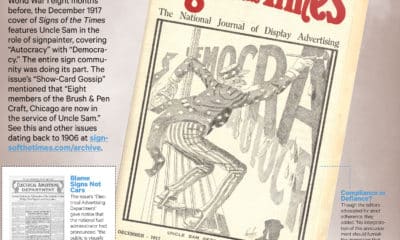
 Signs of the Times4 days ago
Signs of the Times4 days agoDecember 1917 Signs of the Times Cover: Safe for Democracy
-

 News1 week ago
News1 week agoMUTOH Introduces New Single-Pass ADA Features
-

 Special Report1 week ago
Special Report1 week agoThe Wide World of Non-English Signs
-

 News2 weeks ago
News2 weeks agoWells Fargo Sign Removed From Jacksonville Tower
